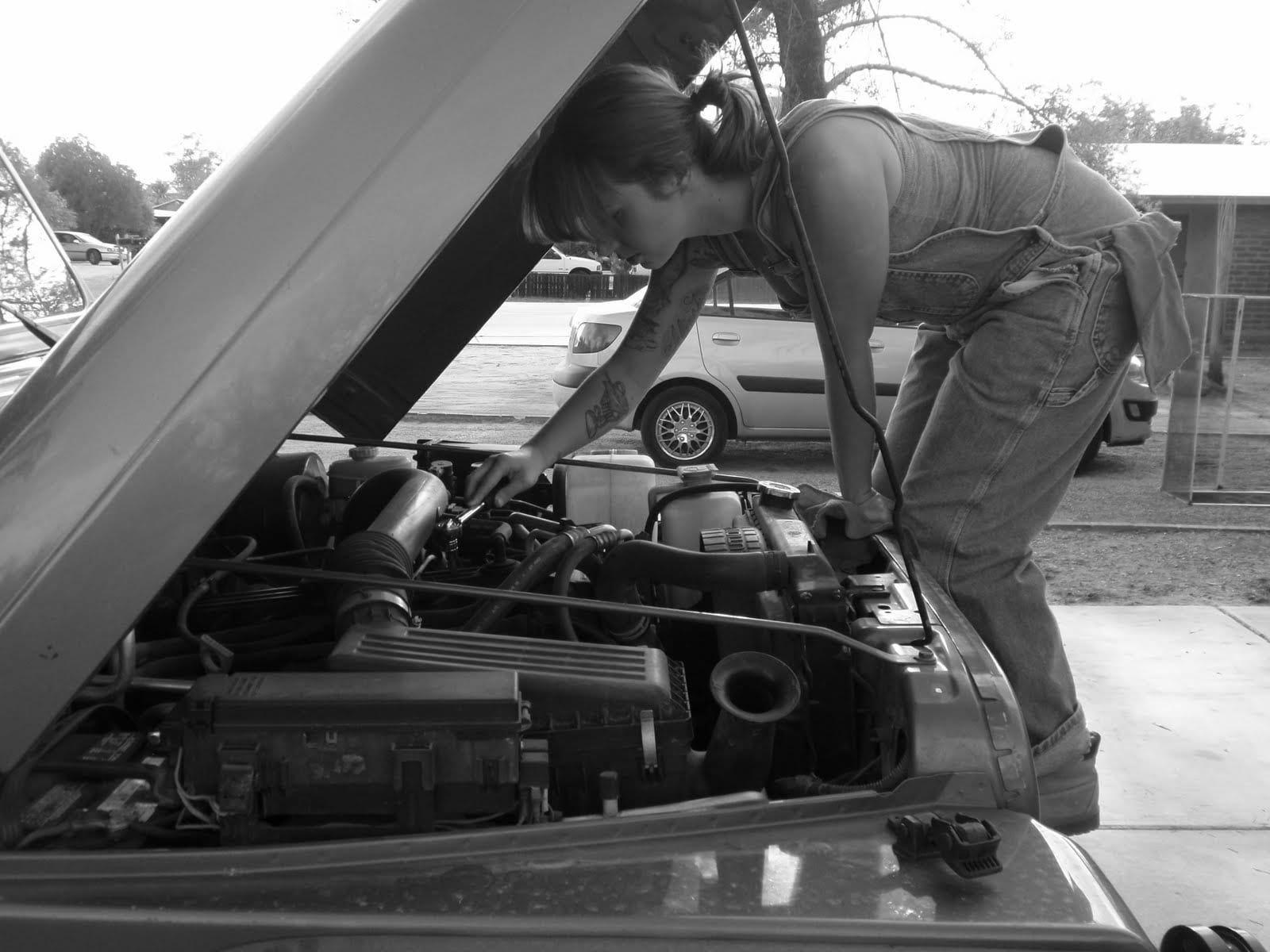Ladies: are the men in your life making car care sound difficult to comprehend? Do they use terms that sound like they came straight out of a sci-fi movie?
Don’t fret. Help is here to make you a savvy car consumer.
Basically, car care can be summed up in one word: maintenance. It’s all about following the vehicle manufacturer’s maintenance program for your car or truck. That’s right, auto upkeep is that simple. So, what do you do next? I’m glad you asked.
First, you need to find a reputable auto center. It doesn’t have to be big; it doesn’t have to be a nationally recognized repair facility. It must have an outstanding reputation within the community regarding honesty, integrity and workmanship. And, you can almost guarantee that it sports an ASE Blue Seal shop insignia on the lobby door. What’s that? Well, you know that organization that test high school seniors for college – you know, ACT? Well, they test technicians for their automotive proficiency, too. And, like the ACT college test, the exam is given under guarded conditions. There’s no looking off the other guys sheet. There’s no penciled in answers before you get the test. That tech better know his — or her — stuff before sitting down to answer those questions. If not, they are not worthy of the blue seal patch. Now that you have the basic guidelines on what to look for in a great auto center, it’s time to find that shop to keep you on the road.
You’ve asked a hundred of your friends and relatives where they go. Now, it’s time to take the majority rule auto center for a test drive.
I recommend going in for an oil change for your first visit to the potential candidate.
Look around the lobby. Is it clean? Are the personnel friendly with the customers? Do the customers appear to be comfortable or stressed? Within the first five seconds, you are going to have that initial gut reaction to whether or not this is a good fit for you and your vehicle. If all is well, ask for a tour of the shop. You will see quite a few items sitting in and around the bays. This is due to the techs repairing vehicles. But, does it look like the stuff has been sitting there for ages? Are there shop rags in the corners with dust on them? Don’t get me wrong. It’s not going to be hospital clean, but there should be some order to the place. And, don’t forget to ask the service adviser about the auto center’s equipment. Is it up to date? Will it be able to handle your vehicle’s needs?
Bad fit? Keep on looking.
Good fit? It’s time to build a relationship with the repair shop.
You need to establish that you are interested in the welfare of your vehicle, your wallet. Telling the service advisor that all you care about is turning the key in the tumbler could be an invitation to turn your wallet inside-out. Even if you don’t know which end of the screwdriver to use, you need to understand what repairs are needed. You do that by asking questions. Hundreds of them.
And, I am talking about items ranging from what type of fuel to use to when does your car need spark plugs to what car wax is the best for your vehicle. Remember: there’s never a stupid question. And, if the tech treats you with a snotty, lassie fare attitude when asked about car repair and care, it’s time to test drive another shop. But, don’t let that one bad-apple shop deter you. Ask those questions until you understand. It’s a professional courtesy for an ASE certified technician to discuss car issues and answer your questions in layman’s terms. It’s important to understand why and how. And, speaking about why and how…
There are two questions that you need to ask every time someone approaches you about auto repair: “why” and “how.”
“Why does my vehicle need brake pad replacement? Show me why it needs to be replaced.”
And, the follow up question: “How does this affect the performance of my vehicle? How does it affect my wallet?” Speaking about protecting your wallet…let’s have a brief lesson regarding oil change coupons.
Definitely take advantage of that oil change coupon. But, remember: it is fiscally impossible for shops to give away oil changes for $15.95, $19.95 or $24.95. Let’s think about this logically. The oil costs on average about $2.99 a quart. The average car takes 4 quarts. So, that’s $12, so far. A good filter is $3. Then, there is labor, insurance, electric bill, gas bill, water bill…it all adds up into the red at the repair facility. The shop just can’t break even with a $24.95 oil, lube and filter exchange. So, if the service adviser approaches you with a high dollar estimate, you need to think twice. As in: get a second opinion! You drove the car into the shop, don’t let them scare you to the point that you believe you can’t drive it out. But, for safety sake, get that second opinion to make sure your vehicle is road-worthy. That’s the key for vehicle longevity and keeping money in your wallet.
And, did I mention maintenance?


Leave a Reply